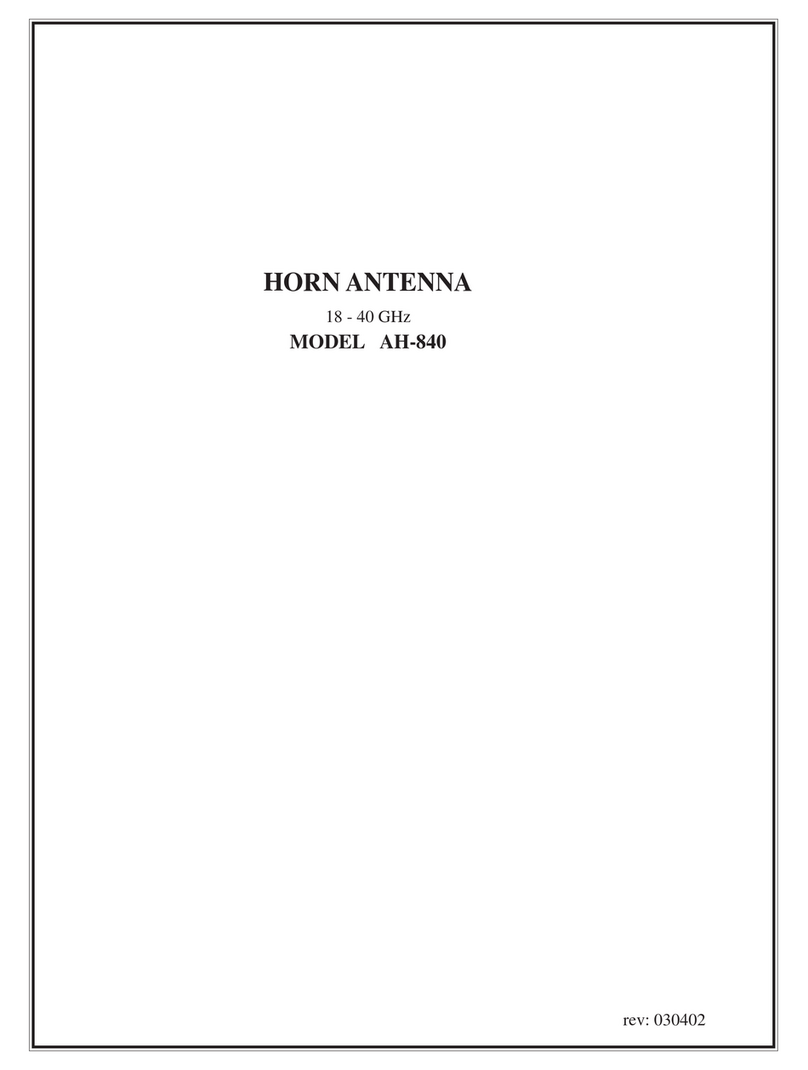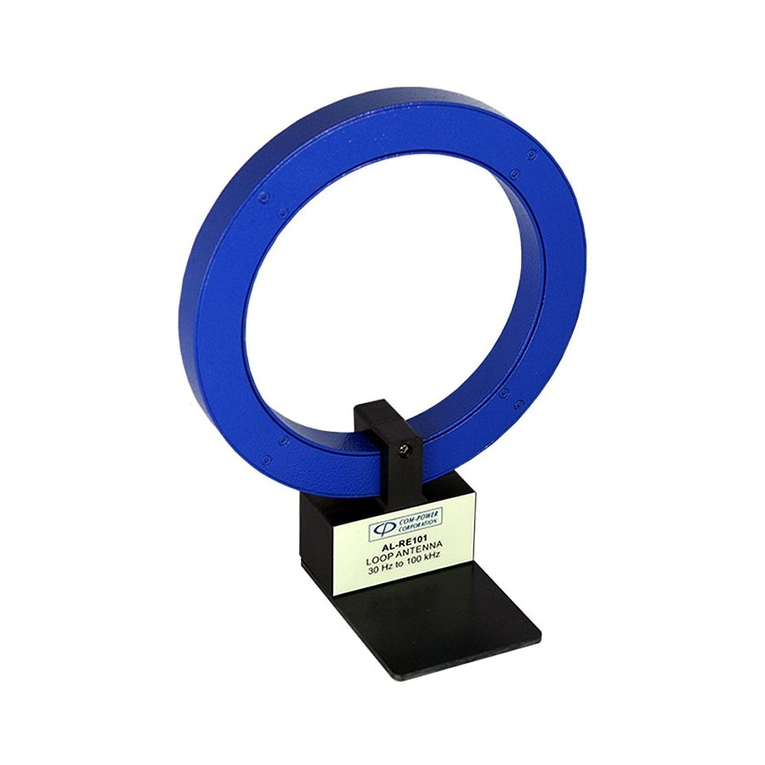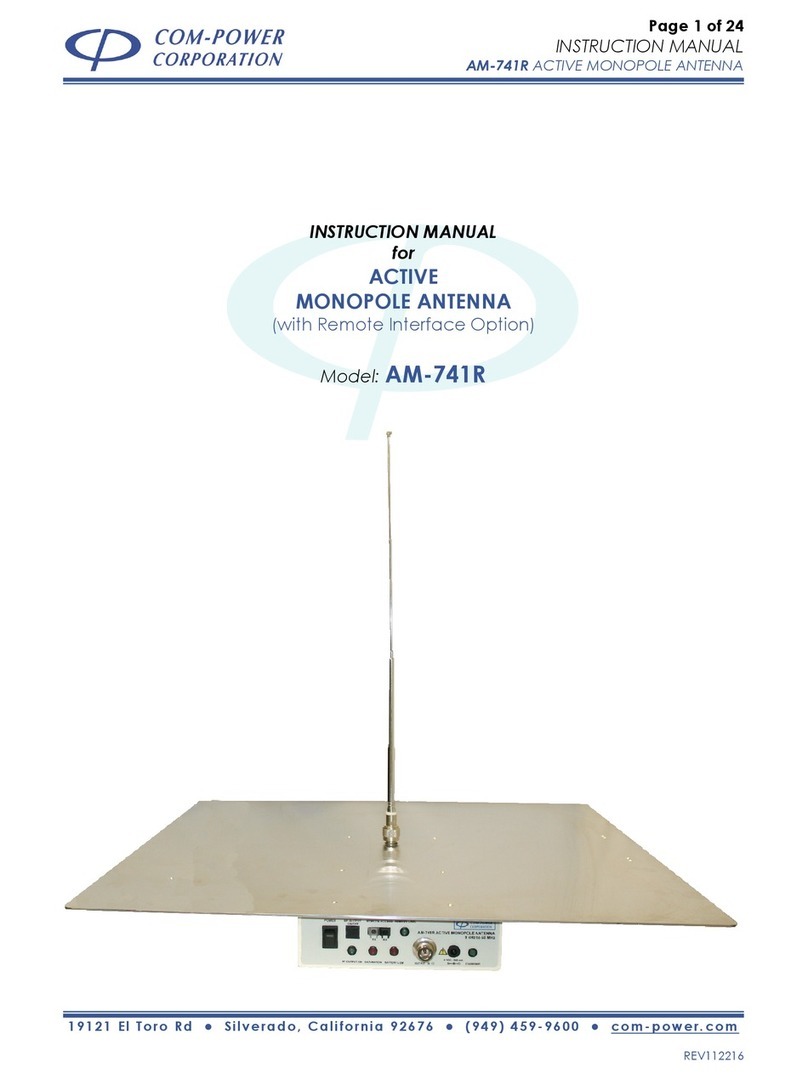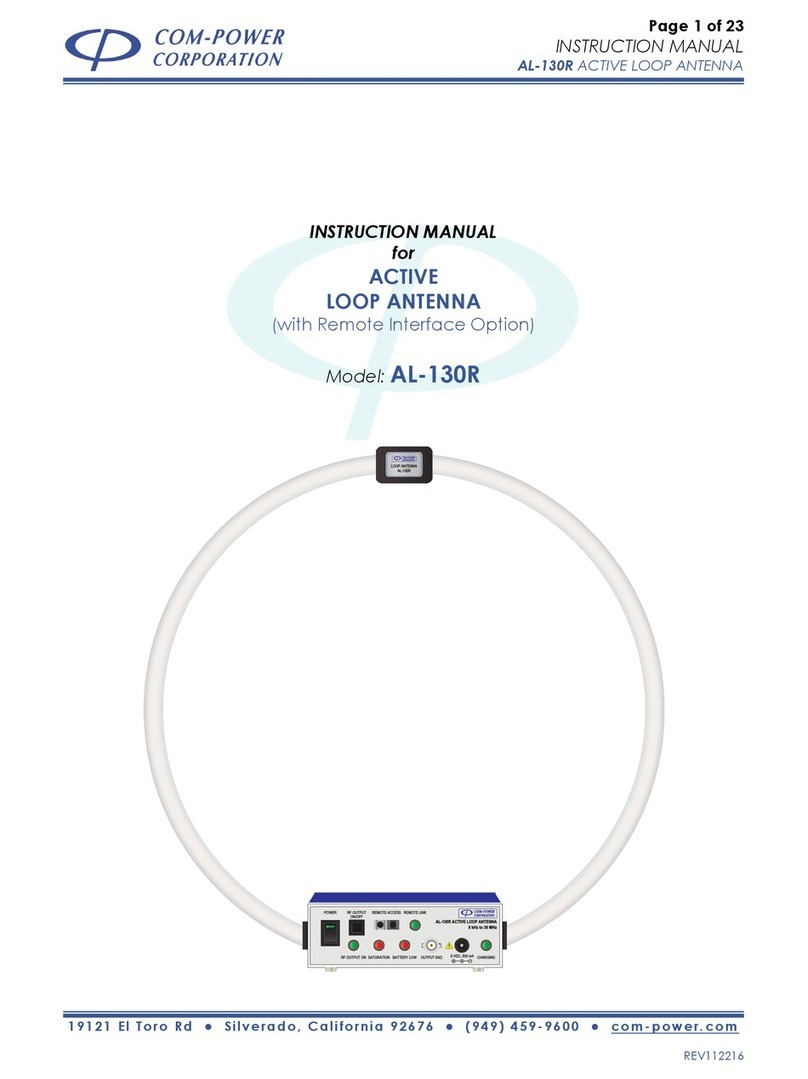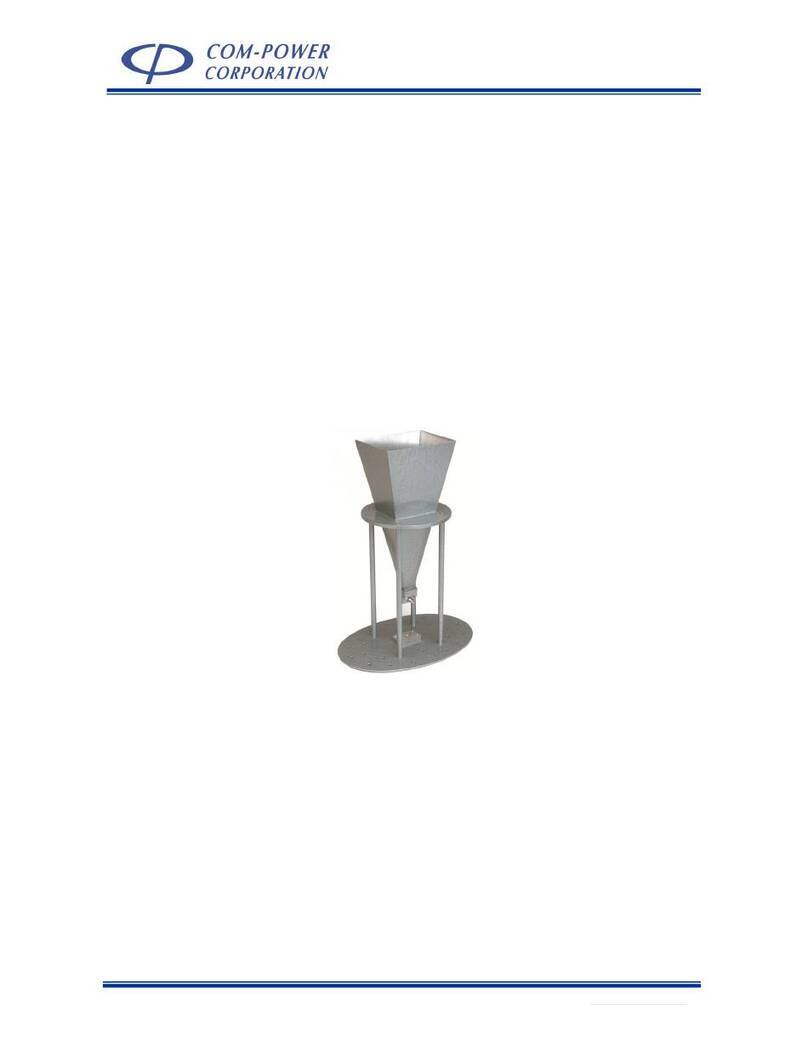
Page 2 of 22
INSTRUCTION MANUAL
AH-8055 HIGH GAIN HORN ANTENNA
19121 El Toro Rd ●Silverado, California 92676 ●(949) 459-9600 ●com-power.com
REV051517
Table of Contents
1.0 Introduction ........................................................................................................... 4
2.0 Products Available from Com-Power ................................................................. 5
3.0 Product Information .............................................................................................. 6
3.1 Incoming Inspection....................................................................................................... 6
3.2 Package Inventory ......................................................................................................... 6
3.3 Product Connections ..................................................................................................... 7
Figure 1 – Product Connections ................................................................................................................ 7
3.4 Product Specifications ................................................................................................... 8
Figure 2 – Product Dimensions ................................................................................................................... 8
4.0 Measurement Correction Factors ....................................................................... 9
4.1 Antenna Factors............................................................................................................ 10
4.2 Preamplifier Gain Factors ............................................................................................ 11
4.3 Insertion Loss Factors..................................................................................................... 11
4.3.1 Insertion Loss Measurement ........................................................................................ 12
4.3.1.1 Insertion Loss Measurement Procedure ............................................................ 12
Figure 3 – Setup for Reference Measurements (R) ............................................................................... 12
Figure 4 – Setup for Insertion Loss Measurements (I) ............................................................................12
5.0 Antenna Configurations (Modes of Operation) ............................................... 13
Figure 5 – Antenna Configurations (Modes of Operation) ................................................................. 13
5.1 AH-8055 as a Transmitting Antenna ........................................................................... 14
Figure 6 – AH-8055 as a Transmitting Antenna ...................................................................................... 14
Figure 7 – Typical Equipment Arrangement for Transmitting Applications ...................................... 14
5.1.1 Field Strength Calculations.......................................................................................... 15
Figure 8 – Calculated Field Strength with 450W input power............................................................. 15
Figure 9 – Power requirements for various fields strengths/distances ............................................... 15
5.2 AH-8055 as a Receiving Antenna .............................................................................. 16
Figure 10 – AH-8055 as a Receiving Antenna ....................................................................................... 16
5.2.1 Field Strength Measurements and Example Calculations ..................................... 17
Figure 11 – Typical Equipment Arrangement for Receiving Applications........................................ 17
5.2.2 Avoiding Preamplifier Saturation................................................................................ 18
6.0 Calibration and Re-Calibration ......................................................................... 19
7.0 Warranty............................................................................................................... 20
